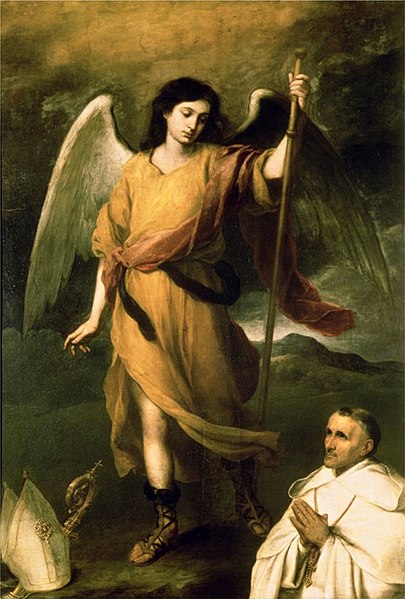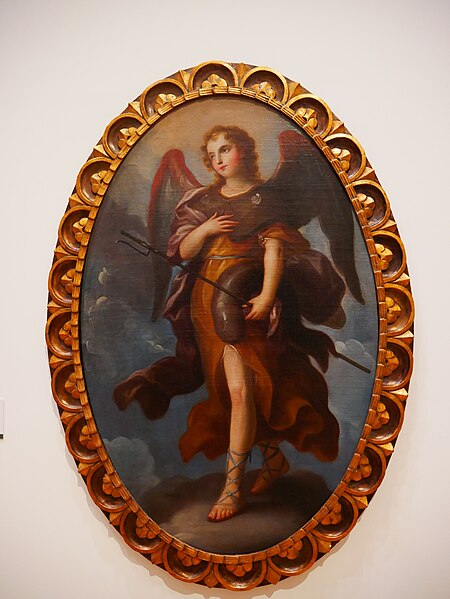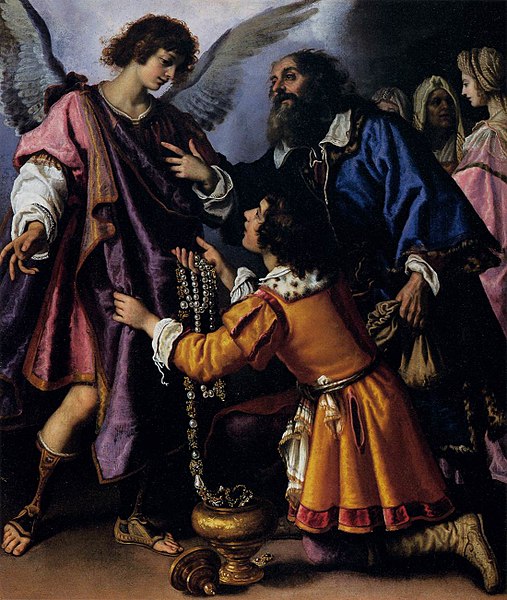St. Raphael, known as one of the archangels in Christian tradition, holds a significant place in religious lore and spirituality.
He is celebrated for his role in the Book of Tobit, where he serves as a guide, protector, and healer. His name, meaning “God heals,” reflects his association with healing and divine intervention.
St. Raphael is the patron saint of various groups, including travelers, the blind, and medical workers, and his influence extends to different cultures and faiths.
This introduction sets the stage for a deeper exploration of his significance and impact in various religious and cultural contexts.
St Raphael Facts
1. St. Raphael is an archangel
St. Raphael is considered one of the archangels in Christian tradition, along with Archangels Michael and Gabriel. Archangels are a higher order of angels who have specific roles and responsibilities in the spiritual realm.
St. Raphael’s primary role is often associated with healing and guidance, and he is believed to be a messenger of God.

2. He is known for his role in the Book of Tobit in the Bible
St. Raphael’s most famous appearance is in the Book of Tobit, which is part of the Old Testament in the Bible. In this book, St. Raphael is sent by God to help Tobit’s son, Tobias, on a journey.
Also Read: Facts About Saint Gabriel
He guides Tobias, protects him from various dangers, and provides instructions for healing Tobit’s blindness. Throughout the story, St. Raphael’s actions demonstrate his role as a healer and a guide, and he plays a crucial part in the resolution of the challenges faced by the characters.
3. His name means “God heals” or “God has healed”
The name “Raphael” has a significant meaning in both Hebrew and Christian theology. It is derived from the Hebrew words “Rapha” (meaning “heal”) and “El” (meaning “God”). Therefore, Raphael’s name can be interpreted as “God heals” or “God has healed.”
This name is highly fitting for his role as an archangel associated with healing and assistance to those in need. It emphasizes the belief that he acts as a divine agent for physical and spiritual healing.
4. St. Raphael is the patron saint of travelers, the blind, and medical workers
St. Raphael is recognized as the patron saint of several specific groups and causes in the Christian tradition.
- Travelers: He is often invoked for the protection and guidance of travelers due to his role in the Book of Tobit, where he accompanies Tobias on a journey and ensures his safe return.
- The Blind: St. Raphael’s association with healing extends to those who suffer from blindness or visual impairments. He is considered a patron saint for those seeking healing or assistance with vision problems.
- Medical Workers: St. Raphael is also the patron saint of medical workers, including doctors, nurses, and other healthcare professionals. This patronage reflects his role as a healer and his significance in matters related to health and well-being.

5. His feast day is celebrated on September 29th in the Roman Catholic Church
The Roman Catholic Church commemorates St. Raphael’s feast day on September 29th each year. This date is part of the liturgical calendar and is a day when Catholics honor and remember the life and contributions of St. Raphael.
It is a time for special prayers, religious services, and devotion to the archangel, particularly by those who have a special connection to him.
6. In Islamic tradition, he is known as Israfil and is one of the four archangels
St. Raphael, known as Israfil in Islamic tradition, is one of the four archangels recognized in Islam. The other three archangels are Gabriel (Jibril), Michael (Mikhail), and Azrael.
Israfil is primarily associated with his role in sounding the trumpet to announce the Day of Judgment, a significant event in Islamic eschatology.
Like in Christian tradition, these archangels are revered as powerful and significant beings in Islam, each with specific duties assigned by Allah (God).

7. He is often depicted in art with a staff and a fish
St. Raphael is commonly represented in art with specific symbols that are associated with his role and actions in the Book of Tobit. One of the most recognizable depictions of him includes a staff and a fish.
The staff represents his role as a guide, while the fish is a reference to the episode where he instructs Tobias to use a fish’s gallbladder to heal his father Tobit’s blindness. This visual representation helps identify him in religious artwork.
8. St. Raphael is associated with guiding Tobias on a journey
St. Raphael’s most famous role in the Book of Tobit is guiding Tobias on a journey. He accompanies Tobias on a quest to retrieve money and assist his family, and during the journey, St. Raphael provides guidance, protection, and valuable advice.
This journey becomes a central part of the story and highlights St. Raphael’s role as a benevolent guide and protector of travelers.
9. He is considered a patron saint for those seeking a spouse
St. Raphael is often invoked by individuals seeking a suitable spouse or a happy and blessed marriage. This association comes from his role in the Book of Tobit, where he helps Tobias find and marry Sarah, who had experienced tragic misfortunes in her previous marriages.
St. Raphael’s assistance in bringing together Tobias and Sarah has led many to seek his intercession when looking for love and companionship.
10. Many places, including cities and hospitals, are named after St. Raphael
St. Raphael’s reputation as a healer and protector has led to the naming of various places in his honor. Cities, towns, churches, and hospitals around the world have been dedicated to St. Raphael.
These names often reflect the connection between the archangel and health, healing, and guidance. People may also establish hospitals and healthcare institutions under his name to invoke his blessings for the well-being of patients and medical staff.
